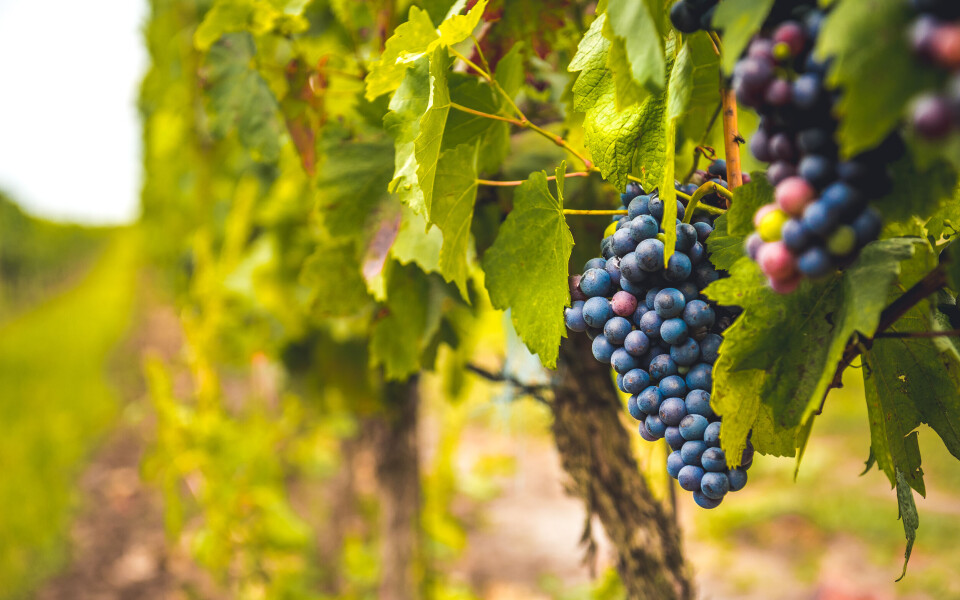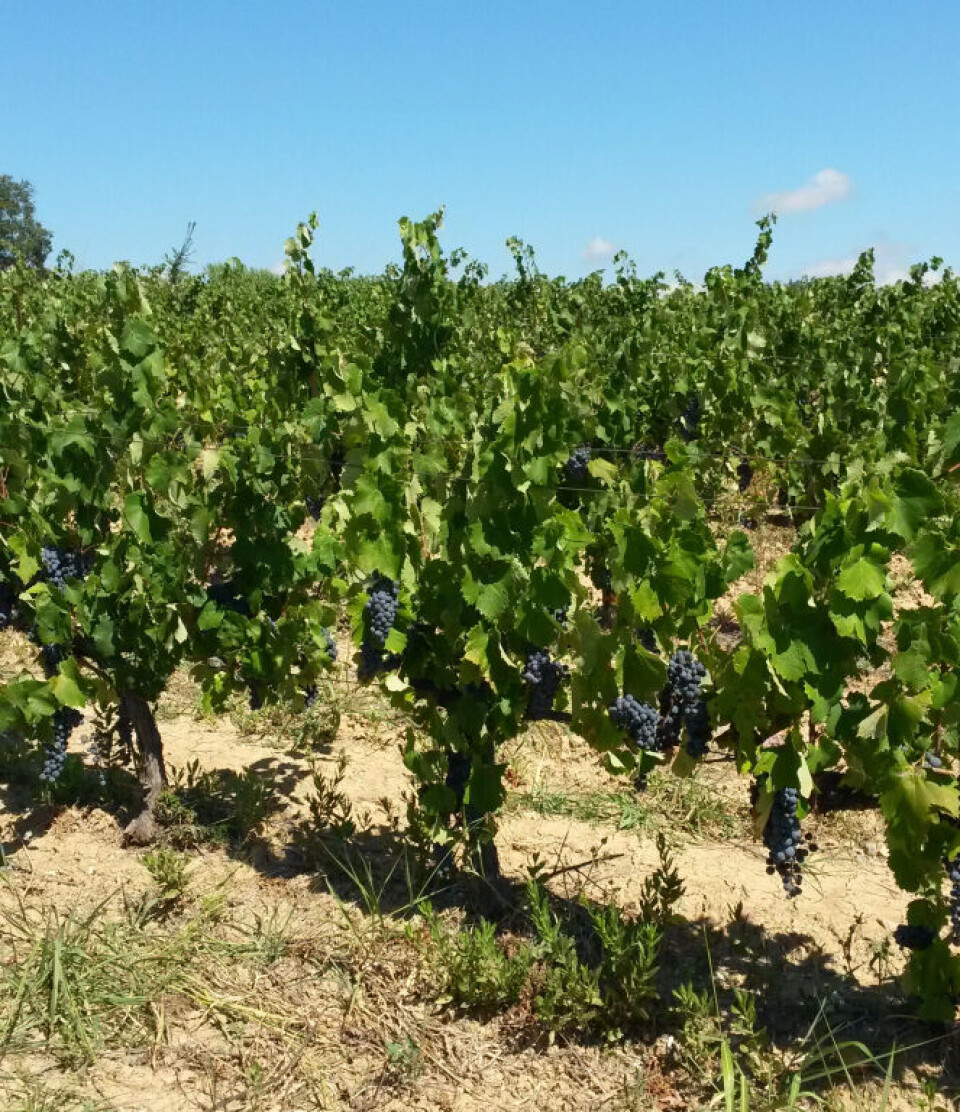-
This self-service wine vending machine has been approved for French roadsides
Innovative machines offer convenient wine access while adhering to alcohol laws
-
Understand the basics of French wine labelling
Why are French wines labelled as Bordeaux or Burgundies, and not Cabernet or Malbec? Jonathan Hesford explains
-
Know your cheeses and their seasons: which to eat in France in February
Cow’s milk cheeses dominate as winter comes to an end
French vineyard yields: it’s quality versus quantity
Vigneron Jonathan Hesford looks at why regulating grapes on a bunch is so crucial for French wine producers

Yield is the amount of wine that is produced by a certain number of vines or a certain size of vineyard.
In France it is usually expressed in hectolitres of finished wine per hectare of vines.
In the New World, people talk about tons per acre or tonnes per hectare.
Essentially it is the same measurement because the amount of wine that a kilo of grapes produces is fairly constant.
It is about 660ml of white wine or 750ml of red wine.
There are two reasons for the difference, both because of the way the wines are made.
Difference between white and red wines
White wine is made by pressing grapes as soon as they are picked whereas red wines are pressed at the end of fermentation.
White grape juice is cold-settled before fermentation so that the cloudy sediment can be discarded and the wine made from clear juice.
Large wineries attempt to recuperate some juice from the sediment using filters but for smaller ones it’s often not worth the effort.
In recent years a new method of removing the solids from white juice has been developed which involves adding a flocculent to the juice, bubbling carbon dioxide and skimming off the scum that forms.
However, it is regarded as a method for low-medium quality wines.
Also, the amount of liquid that you can press from fermented grapes is higher than from fresh ones.
Some argue that measuring yield for a given surface area of vineyard is inaccurate because vines can be planted at different densities from as low as 3,000 up to 10,000 vines per hectare.
Dry regions tend to have low planting densities.
They say that kilos of fruit per vine is a better measure. However, the more vines in a vineyard, the more competition there is between them for water, nutrients and sunlight.
Limits to maintain quality

Every Appellation (AOP) in France has a limit on the hectolitres per hectare allowed in order to maintain a minimum quality level.
However, higher-quality independent producers will often have yield levels lower than the AOP limit as they want their wines to stand out.
Indication Geographique Protégée (IGP) wines have much higher yield limits and Vin de France has no limit.
Read more: A brief guide to French wine regions
Read more: French wine appellations AOP and IGP - what is the point?
Those wines also allow irrigation to boost yields whereas vineyards making AOP wines cannot be irrigated.
Yield is important because the vine, left to its own devices, would produce more grapes than it could ripen to the level required to make wine.
Force vines to over-ripen
Vignerons need to force the vine to over-ripen its fruit to a point where the sugar levels are high and the acid levels low so that we can make wine from the grapes without having to add sugar or de-acidify the juice.
Read more: Grape harvest begins earlier than ever in south France due to heat
Secondly, vignerons want all the grapes in the vineyard to ripen to the same level at the same time so that they can accurately pick the harvest date and be sure that there won’t be much variation.
The more bunches of grapes a vine produces, the more uneven the ripening will be between them and the more unbalanced the resulting wine will be.
This also applies to individual grapes in the bunch.
The bigger the bunch, the more difference there will be in ripeness between grapes.
That is why bunches of varieties for making quality wines are smaller than bunches of table grapes.
Smaller bunches equals higher quality
Generations of vignerons have selected and crossed grapevines to create varieties with small bunches.
The most highly-regarded grapes, known as noble varieties, such as Cabernet Sauvignon, Merlot, Syrah, Chardonnay and Pinot noir have smaller bunches than those destined for lesser wines like Colombard, Ugni blanc (AKA Trebbiano) and Aramon.
It’s a complete misconception that big bunches of grapes will make great wine.
The main method of restricting yield is to prune the vine in winter to limit the number of new shoots it grows.
Each shoot normally only produces one or two bunches.
There are a number of different pruning techniques used in France, depending on region and grape variety, but the aim is the same.
However, the decision on how hard to prune the vine is down to the individual farmer.
An estate which makes its own wines and aims for quality will prune hard to keep the number of bunches low whereas a grower aiming for higher yields will prune more lightly, leaving more buds from which the shoots grow.
‘Are you growing for quality or quantity?’
Among vignerons a common question is “Est-ce que vous taillez court ou vous taillez longue?” as a euphemism for “Are you growing for quality or quantity?”.
However, overly-heavy pruning can lead to more leafy growth, which will encourage fungal diseases and shade the grapes from the sun.
There is a limit to how much vignerons can reduce yield to achieve optimal ripening.
Beyond a certain point, it just means having less wine.
The terroir of the vineyard will have an impact on yield. Wine growers don’t want rich soils, plots with heavy clay or areas with high rainfall.
Low vigour soils are a hallmark of quality in wine and many books have been written about the inherent qualities of stony, rocky terroir.
Some vignerons brag about having very low yields to justify the price of their wines, when in reality the yield is only low because of many dead and diseased vines in their vineyard.
Read more: Here's how to save money on good French wine
The aim of controlling yield is to balance the amount of fruit to the capacity of the vine to ripen it.
That capacity is determined by the health and root structure of the vine and the fertility of the soil.
Pruning, terroir and the age of the vine can all help get that balance but sometimes the vigneron will need to do other things like planting cover-crops down the rows, judiciously ploughing the soil, trimming the shoots or removing bunches early in a “green harvest”.
All those extra things cost money, so having perfect terroir is an advantage.
I would go so far as to suggest that the role of terroir in reducing the amount of work a vigneron has to do, allowing them more time and money to spend on equipment, barrels and marketing, is its main benefit.
More important than its supposed impact on the flavour of a wine.
But that is a subject for another article.
Jonathan Hesford has a Postgraduate Diploma in Viticulture and Oenology from Lincoln University, New Zealand and is the owner, vigneron and winemaker of Domaine Treloar in the Roussillon. www.domainetreloar.com.
Related articles
Bordeaux winegrowers demand money to uproot vines
Pro-wine President Macron pleases industry but upsets doctors
‘I fight for wine in French culture, heritage and economy’
























